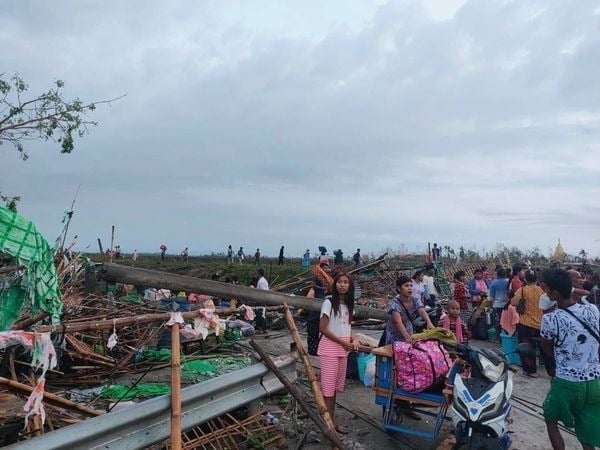Mizzima
The advocacy group the Human Rights Foundation of Monland (HURFOM) has released its monthly overview of the human rights situation in southeastern Myanmar for the month of June 2024.
Below is the HURFOM update for the situation in Karen State for the month of June:
In Karen State
8,500+ people were newly displaced, 25 were injured and 8 were Killed during June 2024.
Due to the placement of landmines in the Chaung Hnit Khwa area, residents are still prohibited from returning home. Despite multiple requests from the villagers of Chaung Hnit Khwa in Kyaikmayaw Township, Mon State, the military junta has stated that the presence of landmines makes it unsafe for residents to return and resettle.
Locals report that the junta is using the landmine threat as a pretext to steal valuables from abandoned homes and sell them in Paung Township.
Since the morning of 10 November, the Karen National Liberation Army (KNLA) and the People’s Defence Forces (PDF) have launched coordinated attacks on junta troops stationed at the Chaung Hnit Khwa police station and bridge gate, leading to ongoing clashes.
These conflicts have persisted for over 50 days, forcing the entire village to evacuate.
Approximately 4,000 residents from Chaung Hnit Khwa and nearby villages such as Phat Tey Kone, Ma Yan Kone, Thayat Kone, Paya Kone, Tadar Oo, and Taung Kalay in Kyaikmayaw Township have been displaced.
During the clashes, more than 10 villages, including Chaung Hnit Khwa, Taung Kalay, and Hla Ka Zine, saw thousands of homes raided by junta troops, resulting in arrests, beatings, and further displacement.
The junta also employed artillery shelling and airstrikes, setting homes on fire and causing civilian casualties.
Although the Myanmar Army forces regained control of the Chaung Hnit Khwa area in December last year, residents have been barred from returning home for over eight months.
Those attempting to return have faced gunfire. The junta continues to claim that landmines make the area unsafe for resettlement, delaying the return of the villagers.
Despite repeated appeals to the Kyaikmayaw Township General Administration Department and the
township police forces, no action has been taken, according to residents. The displaced population from Chaung Hnit Khwa, including those who fled to Thailand, continues to face severe hardships.
Over time, the number of refugees has decreased from 4,000 as some have found work abroad or resettled elsewhere, leaving around 2,000 people still displaced, according to local assessments.
These remaining displaced individuals are living with friends and relatives, in monastic schools, and at monasteries in Mawlamyine, Mudon, and Kyaikmayaw towns.
Reports indicate that during the Chaung Hnit Khwa battles, more than 10 locals were killed, over 20 were injured, and nearly 100 homes were burned down.





